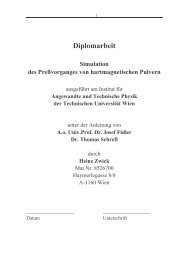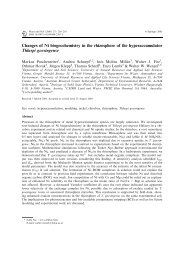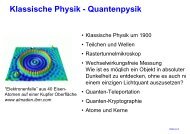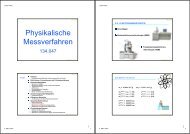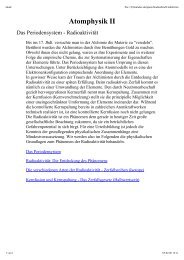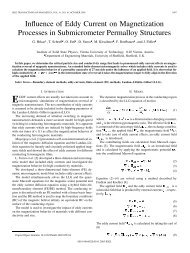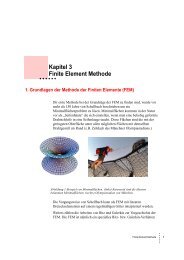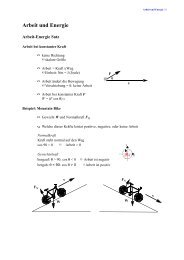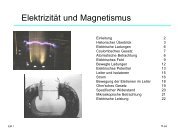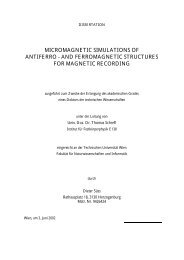Read Back Signals in Magnetic Recording - Research Group Fidler
Read Back Signals in Magnetic Recording - Research Group Fidler
Read Back Signals in Magnetic Recording - Research Group Fidler
You also want an ePaper? Increase the reach of your titles
YUMPU automatically turns print PDFs into web optimized ePapers that Google loves.
<strong>Read</strong> Head Design<br />
Figure 5.2: A comparison (left) of a conventional sp<strong>in</strong> valve and a sp<strong>in</strong> valve us<strong>in</strong>g a<br />
synthetic ferromagnet to fix the p<strong>in</strong>ned layer [20]. The <strong>in</strong>terlayer exchange constant (right)<br />
for two Ni80Co20 layers as function of the Ru spacer layer thickness [32].<br />
The IEC effect has its orig<strong>in</strong> <strong>in</strong> quantum <strong>in</strong>terference of electron states [36]. The exchange<br />
coupl<strong>in</strong>g constant J IEC [J/m 2 ] depends on the nonmagnetic layer thickness t NM like<br />
⎛ tNM<br />
⎞<br />
s<strong>in</strong> ⎜2π +Φ<br />
Λ<br />
⎟<br />
J = J<br />
⎝ ⎠<br />
(5.4)<br />
IEC<br />
0 2<br />
tNM<br />
as shown <strong>in</strong> Figure 5.2. Λ , Φ , and J 0 are constants, depend<strong>in</strong>g on the composition of the<br />
layers. The advantage of sp<strong>in</strong>-valves with a synthetic antiferromagnetic p<strong>in</strong>ned layer is the<br />
very large exchange field of IEC up to 0.5 T. This is an <strong>in</strong>crease of a factor 10 compared to<br />
the direct exchange coupl<strong>in</strong>g with an antiferromagnet. So the stability aga<strong>in</strong>st external fields<br />
is much better due to the higher anisotropy. Moreover the demagnetiz<strong>in</strong>g fields of the two<br />
ferromagnetic layers Fp,1 and Fp,2 cancel each other partially, which leads to a reduced<br />
<strong>in</strong>fluence on the free layer.<br />
5.1.5 Sense Current<br />
The sense current flow<strong>in</strong>g through the GMR sensor generates a magnetic field. This field also<br />
<strong>in</strong>fluences the p<strong>in</strong>ned layer magnetization. For conventional simple sp<strong>in</strong> valves there is one<br />
current direction which is more favorable. The ma<strong>in</strong> part of the current flows through the Cu<br />
layer, due to its higher conductivity compared to the other layers. So the current field either<br />
adds up with the demagnetiz<strong>in</strong>g field of the p<strong>in</strong>ned layer or weakens the field act<strong>in</strong>g on the<br />
62



